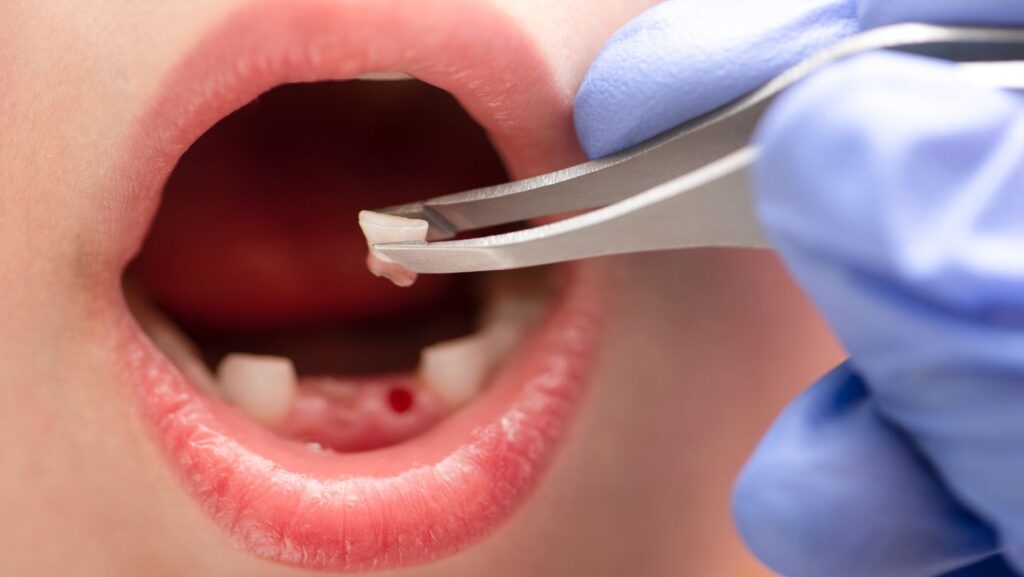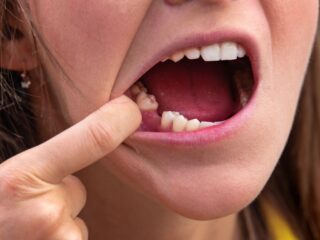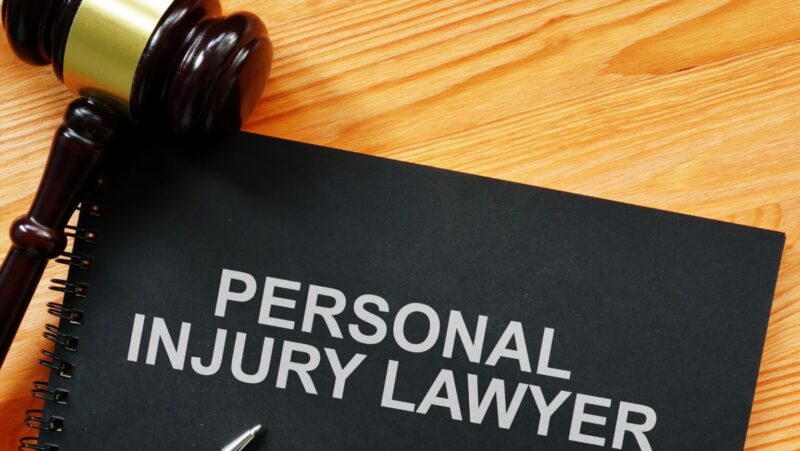
Having a tooth extraction is never fun, but it’s sometimes necessary when all other means don’t work. Whether you’re dealing with a pesky wisdom tooth removal or a troublesome molar, you may experience some complications afterward if you don’t care for the healing area. The good news? With proper precautions, you can sail through the recovery with minimal discomfort and avoid complications.
This article provides simple, practical steps to ensure a smooth recovery after your tooth extraction. Read on to learn what to do after the procedure, how to manage pain and swelling, and the best practices to keep your mouth healthy!
Understand the Extraction Process
The first step to avoiding complications is understanding what happens during a tooth extraction. This will give you a better sense of what to expect as you recover.
When you have a tooth removed, the dentist will numb the areas around the tooth using a local anesthetic. They’ll then gently loosen the tooth and remove it from the socket. Depending on the complexity of the extraction, they may need to remove some bone or cut the tooth into smaller pieces to get it out.
Once the tooth is out, the dentist will clean the socket and may place a few stitches to help the area heal. They’ll then place a piece of gauze pad over the tooth socket and have you bite down to help stop any bleeding.
To ensure your dental extraction procedure goes well, do your research to find the best practice. Look for reputable dental clinics, such as Durango Dental, that have experienced dentists and the latest techniques and technologies. They should also have a track record of successful tooth extractions and positive patient reviews.
Why? Simple! Choosing the right dentist can make all the difference in the comfort and success of your procedure.
Manage Pain and Swelling
After your tooth extraction, managing the aftermath will be as important as the procedure. Your body’s natural response to this trauma may be inflammation, which causes severe pain, swelling, and bruising. This is all part of the normal healing process, but managing the side effects is vital.
Your dentist will likely prescribe medication, such as ibuprofen or acetaminophen, to help you manage any discomfort. Be sure to take it as directed; don’t exceed the recommended dosage. In the first 24 hours, you can also apply a cold compress to the outside of your cheek to help reduce swelling.
These simple remedies can help keep you comfortable as your mouth heals. By managing pain and inflammation, you’ll be back to your normal routine in no time.
Avoid Strenuous Activity
Taking it easy for the first few days after a tooth extraction is crucial. Strenuous activity can increase blood flow to the area, leading to more bleeding and swelling. To promote healing, stick to light and gentle movements during this initial recovery period.
Be mindful of your daily activities as well. Avoid heavy lifting, bending over, or intense exercise, as these can all disrupt the healing process. Even seemingly harmless actions like blowing your nose, spitting, or drinking through a straw can cause problems by dislodging the blood clot that forms in the socket.
This blood clot is essential for proper healing. If it becomes dislodged, you may develop a painful condition called dry socket, which we’ll cover in more detail later. To prevent complications and ensure a smooth recovery, take it easy in the days following your tooth extraction. Your body needs time to heal, so give it the opportunity to do so.
Keep the Area Clean
Maintaining good dental hygiene is crucial after a tooth extraction. For the first 24 hours, you’ll want to gently brush and floss the other teeth in your mouth but avoid the extraction site itself.

After that initial day, you can carefully brush around the area using a soft-bristled toothbrush.
Your dentist may also recommend rinsing your mouth with warm salt water solution a few times a day. This can help keep the area clean and promote healing. Just be sure to avoid mouthwashes that contain alcohol, as these can further irritate the sensitive tissue.
Diligently caring for your oral health during this recovery period is critical. Gently cleaning around the extraction site while giving it the space it needs to heal will help prevent complications and get you back to your routine as quickly as possible.
Avoid Smoking and Drinking Alcohol
In the days following your oral surgery, it’s best to avoid any habits that could disrupt the healing process. This means quitting or pausing your smoking habit and drinking, at least temporarily.
Smoking can interfere with how your mouth heals. The chemicals and irritants in cigarette smoke can increase your risk of developing complications. So, you must refrain from smoking for the first week after your tooth extraction procedure.
The same goes for alcohol consumption. Drinking can delay the overall healing timeline, causing more bleeding and swelling. It can also make it harder for the all-important blood clot to form properly in the affected area. For the best results, it’s best to abstain from alcohol for at least the first 3-5 days after your procedure.
Watch for Signs of Dry Socket
One of the most severe complications that can occur after a dental extraction is a condition called dry socket. This happens when the blood clot that forms in the tooth socket becomes dislodged or fails to develop correctly, exposing the underlying bone.
Symptoms of dry socket include the following:
- Severe pain that radiates to the ear, eye, or neck
- Bad taste or odor in the mouth
- Visible bone in the socket
- Swollen lymph nodes
If you experience any of these symptoms, reach out to your dentist right away. A dry socket requires prompt treatment to prevent further complications and promote proper healing.
Your dentist can apply a medicated dressing to the socket to protect the area and relieve the pain. They may also prescribe antibiotics or other medications to help manage the condition.
Eat Soft, Nutrition Foods
It’s essential to be mindful of what you eat in the days following your tooth removal. Stick to soft, nutritious foods that won’t aggravate the surgical site or get stuck in the socket. Some of the good options after wisdom teeth removal include:
- Soups
- Mashed potatoes
- Yogurt
- Applesauce
- Smoothies
- Pudding
- Oatmeal
Avoid crunchy, sticky, or hard foods that could damage the healing area. Also, steer clear of anything too hot or spicy, as these can cause pain and irritation.
Make sure you get adequate nutrition during the recovery process. Aim for three small, nutrient-dense meals per day, and don’t be afraid to supplement with protein shakes or meal replacement drinks if you’re having trouble eating solid foods.
Attend All Follow-Up Appointments
Even if you feel like you’re healing well, attend any follow-up appointment scheduled by your dentist. These visits give your dentist a chance to monitor your progress and address any issues before they become bigger problems.
During these check-ins, the doctor will likely do a few things. First, they’ll examine the surgical site for signs of infection or other complications. If stitches were used, your dentist may also remove them now. The oral specialist can also can continued care and tell you when you can safely resume your normal activities.
Take advantage of these follow-up visits, even if you think you’re doing just fine. Your dentist has the expertise to catch potential issues early and make sure your mouth is healing properly.
A little extra time spent at the office now can save you a lot of trouble down the road. Stay committed to your recovery plan, and your dentist will help ensure a smooth and speedy return to full health.
Stay Hydrated and Get Enough Rest
Proper hydration and adequate rest are crucial for healing after a tooth extraction. Make sure you’re drinking plenty of water throughout the day. Aim for at least eight cups of water and avoid sugary or caffeinated beverages, as they can dehydrate you.
Also, prioritize getting enough sleep during this recovery period. Your body needs time to rest and repair itself, so try to clock in 7-9 hours each night.
If you have trouble sleeping due to pain or discomfort, don’t hesitate to discuss it with your dentist. They may be able to adjust your pain medication or suggest over-the-counter sleep aids to help you get the rest you need.
Manage any Bleeding
Some amount of bleeding is normal following a tooth extraction, but try to keep it under control as much as possible. If you notice prolonged bleeding that isn’t slowing down, there are a few things you can try.
First, bite down firmly on a clean piece of gauze pad for 30-60 minutes. This pressure can help form blood clots in the healing site.
You can also try sucking on ice packs or applying a cold compress to the outside of your cheek. The cold temperature can help constrict blood vessels and reduce bleeding.
Additionally, it’s best to avoid taking aspirin or ibuprofen, as these can thin your blood and increase bleeding. Stick to the pain medication prescribed by your dentist.
If the bleeding persists for more than 24 hours or seems particularly excessive, don’t hesitate to contact your dentist right away. They may need to take a closer look and provide additional treatment to get the situation under control.
Staying vigilant about managing any post-extraction bleeding is crucial for a smooth recovery. With the right steps, you can get that area to stop bleeding and continue healing properly.
Recognize and Treat Infection
In addition to a dry socket, a tooth infection is another potential complication you’ll want to watch out for after a tooth extraction. Some key signs to look out for include:
- Increased pain, swelling, or redness around the extraction site
- Fever
- Pus or oozing from the socket
- Bad taste or smell in the mouth
If you experience any of these symptoms, you must contact your dentist immediately. Untreated infections can lead to more severe issues, so prompt medical attention is essential.
Your dental professional may need to prescribe antibiotics to clear up the infection. They may also examine the surgical site more closely and provide additional targeted treatment, like draining a tooth abscess or thoroughly flushing out the socket.
Catching an infection early is the best way to prevent it from escalating. Pay close attention to your symptoms in the days following your extraction, and don’t hesitate to talk to your dentist if anything seems off. With the right care, you can get that infection under control and keep your recovery on track.
Be Patient and Prioritize Healing
Recovering from a tooth extraction may take time, so it’s essential to be patient with yourself. The initial discomfort and swelling should start to subside within the first few days, but it can take 1-2 weeks for the area to heal fully.
During this recovery period, follow your dentist’s instructions carefully and avoid any activities that could disrupt the healing process. It may be tempting to rush the healing process but resist the urge. Rushing could lead to setbacks or even complications down the line. Instead, take it easy, keep up with your oral hygiene, and give your mouth the time it needs to mend properly.
Remember, everyone’s healing journey is unique. Be patience and prioritize your recovery and you’ll get back to feeling like your old self in no time.
Conclusion
Recovering from a tooth extraction can be a smooth and complication-free process if you follow the right steps and prioritize your healing. Keep in mind that the key to a successful recovery lies in careful aftercare, including managing pain and swelling, avoiding strenuous activities, and maintaining good oral hygiene. Be mindful of your diet, stay hydrated, and get plenty of rest to support your body’s natural healing processes. By taking these steps and being patient with your recovery, you can minimize discomfort and avoid complications.












